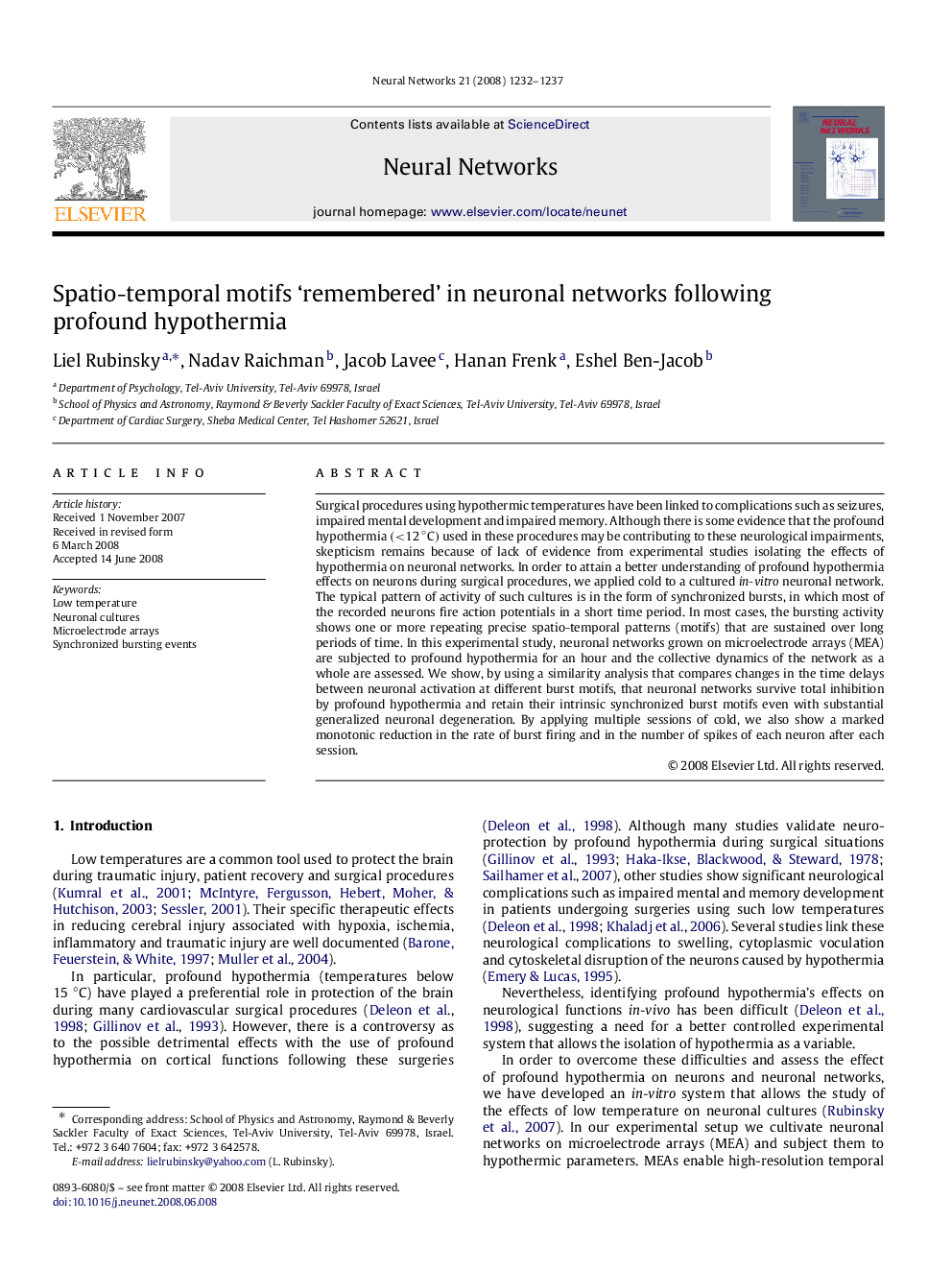| Article ID | Journal | Published Year | Pages | File Type |
|---|---|---|---|---|
| 10326515 | Neural Networks | 2008 | 6 Pages |
Abstract
Surgical procedures using hypothermic temperatures have been linked to complications such as seizures, impaired mental development and impaired memory. Although there is some evidence that the profound hypothermia (<12Â âC) used in these procedures may be contributing to these neurological impairments, skepticism remains because of lack of evidence from experimental studies isolating the effects of hypothermia on neuronal networks. In order to attain a better understanding of profound hypothermia effects on neurons during surgical procedures, we applied cold to a cultured in-vitro neuronal network. The typical pattern of activity of such cultures is in the form of synchronized bursts, in which most of the recorded neurons fire action potentials in a short time period. In most cases, the bursting activity shows one or more repeating precise spatio-temporal patterns (motifs) that are sustained over long periods of time. In this experimental study, neuronal networks grown on microelectrode arrays (MEA) are subjected to profound hypothermia for an hour and the collective dynamics of the network as a whole are assessed. We show, by using a similarity analysis that compares changes in the time delays between neuronal activation at different burst motifs, that neuronal networks survive total inhibition by profound hypothermia and retain their intrinsic synchronized burst motifs even with substantial generalized neuronal degeneration. By applying multiple sessions of cold, we also show a marked monotonic reduction in the rate of burst firing and in the number of spikes of each neuron after each session.
Related Topics
Physical Sciences and Engineering
Computer Science
Artificial Intelligence
Authors
Liel Rubinsky, Nadav Raichman, Jacob Lavee, Hanan Frenk, Eshel Ben-Jacob,
